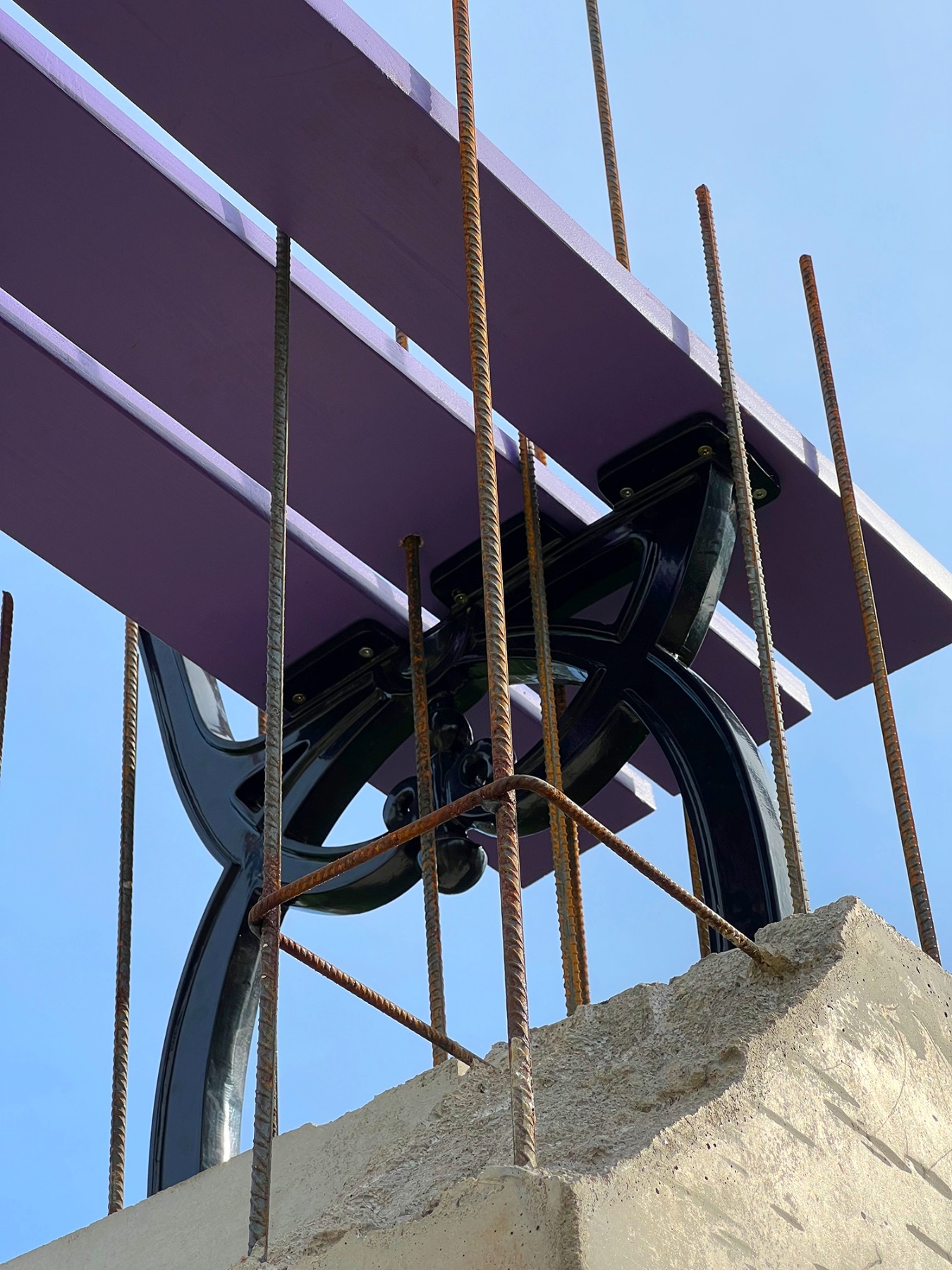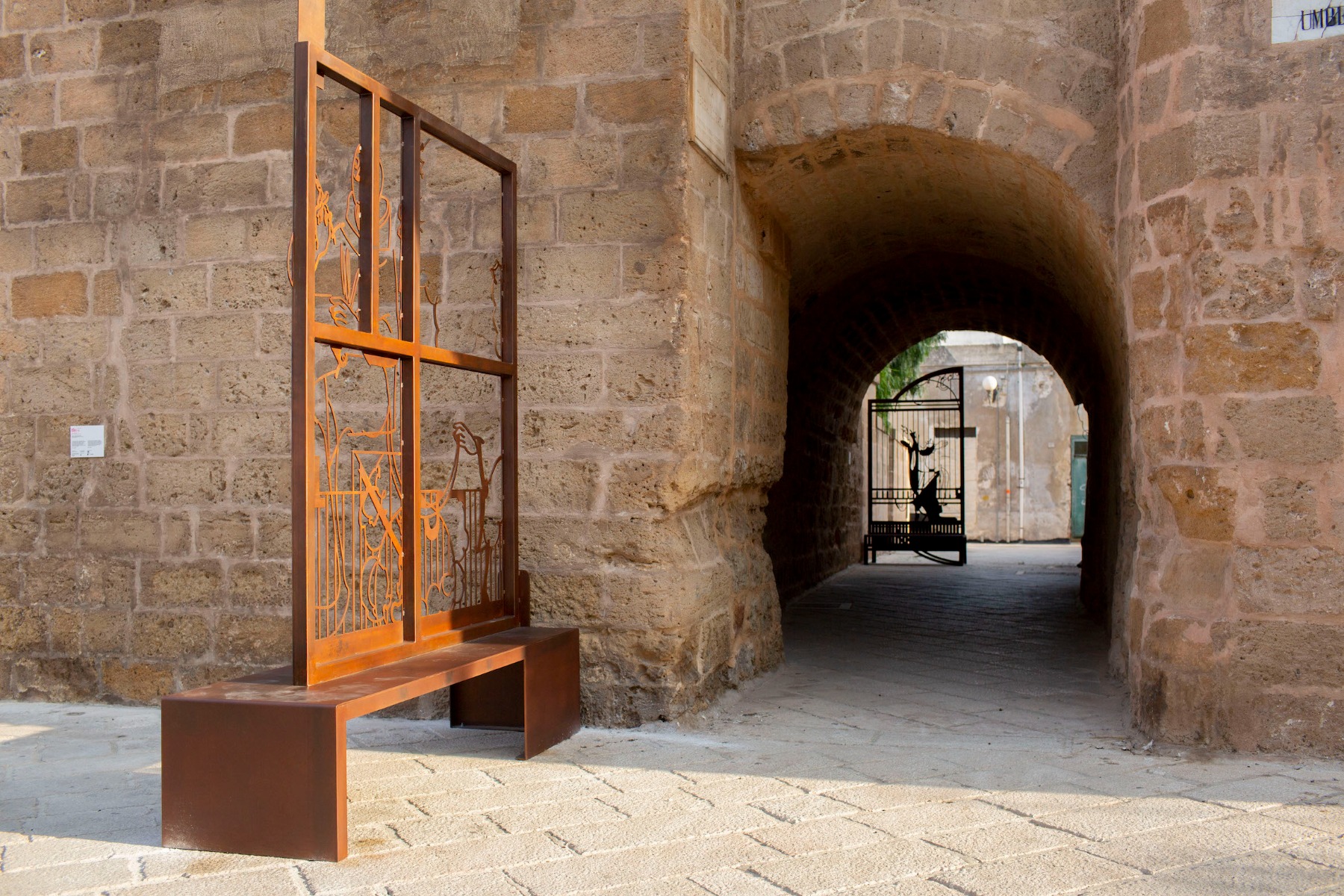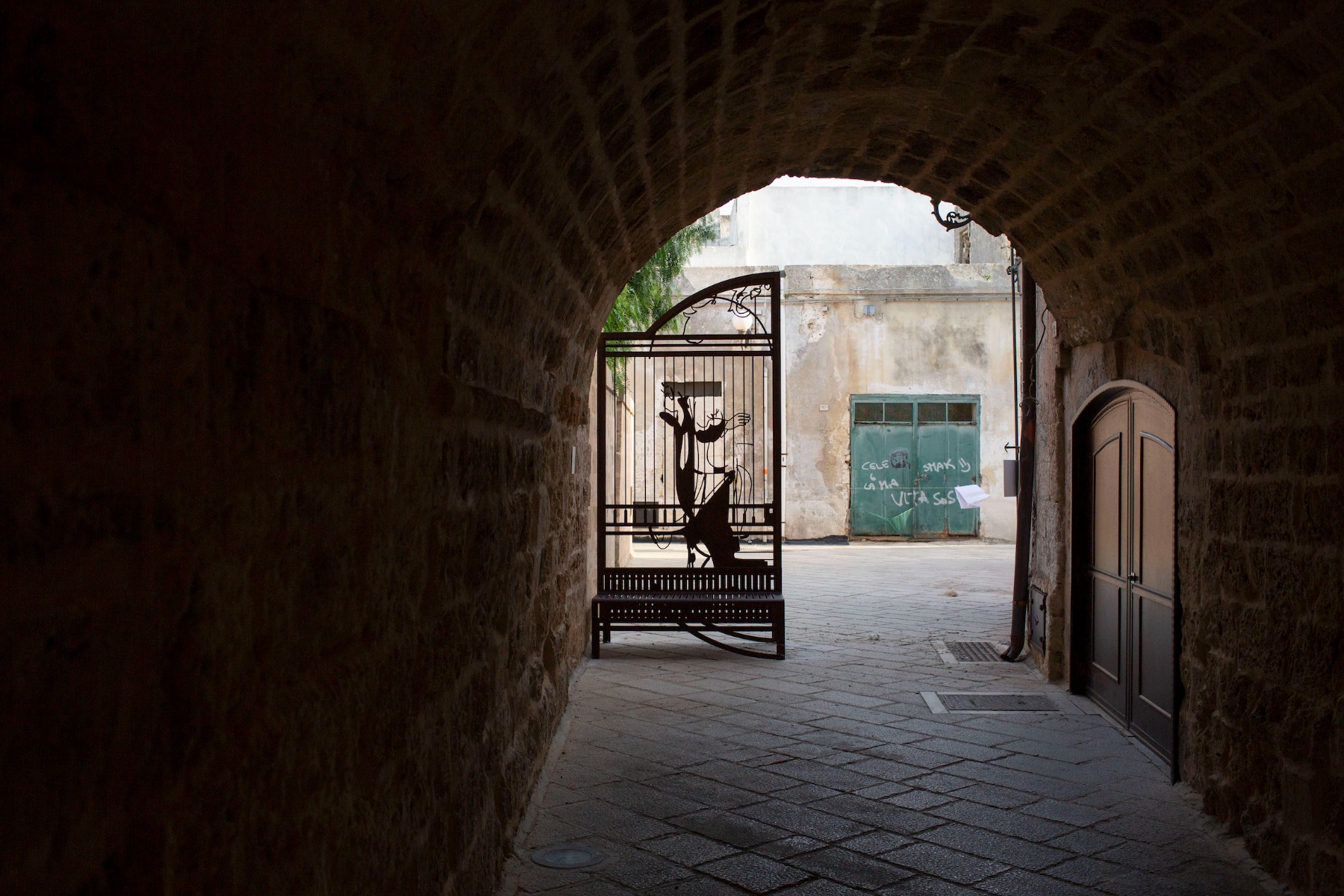
Benches with roots. Gates with seats
Evita Vasiļjeva’s sculptures in collections and the public space
Monumentality and the physicality of materiality are some of the defining characteristics of Evita Vasiļjeva’s artworks. Their surfaces invite touch – when encountering her works, the desire to feel the texture of the substance with one’s fingertips and to touch the rough body of art is spontaneous. The melancholy and poetry present in Vasiļjeva’s art, combined with the heaviness of materiality – sometimes, even a certain brutality – vibrates and emotionally challenges the viewer. The apparent incompleteness generates a feeling of openness. Her objects, once in the environment, engage in an active dialogue with the location and its inhabitants. The works are open to conversation, creating an energetic space where one wants to be and that is both thought-provoking and recharging. This combination appears to have been the decisive determinant that last summer led to the permanent installation of several of Vasiļjeva’s artworks in various viewing locations around Europe: on Denmark’s island of Møn (as part of curator René Bloch’s sculpture garden collection), in the environmental art collection of the village of Maruggio in Puglia, Italy, and in Dūrmuiža in Latvia (in the collection of entrepreneurs Agita and Andris Putāns).
Evita Vasiļjeva.
If there is something heavy, there should be something light II. Bench "Jugend" in Dūrmuiža in Latvia, 2023.
Cast concrete, steel rods, ready-made bench, paint. 170x69x400 cm.
Dūrmuiža collection
Lightness and heaviness in Dūrmuiža and Møn
“Once when I was walking through a park, I saw a park bench that had been toppled over, almost as if it were drunk. The once-buried concrete blocks that had been anchoring the bench to the ground were now visible. There were dark holes in the ground where the concrete blocks used to be. ‘Oh, I did not know objects have roots’, I thought. Actually, concrete blocks are commonly attached to street objects (benches, parking poles, street signs) in order to give them weight and stability. It made me wonder what else is buried under the surfaces we walk on? How deep are the roots of the objects we live with?
Evita Vasiļjeva. If there is something heavy, there should be something light. 2023
Cast concrete, steel rods, paint. Bench from Copenhagen.
234x350x46 cm.
Kunsthal44, Moen, Denmark.
Curator René Bloch.
Photo: Thomas Gunnar Bagge

“By trying to find a balance between control and loss of control, sculptures create their own dynamics determined by chance, the limits of what is possible at the time and location, and the inevitable laws of physics, for example, how to make concrete stand upright. I try not to separate both extremes: the gravity of materials (reality), and the flow of thoughts (poetry). If there is something heavy, there should be something light. If something is very complicated, something else should be easy. Life is very complex and intertwined.”
Evita Vasiļjeva.
If there is something heavy, there should be something light II. Bench "Jugend" in Dūrmuiža in Latvia, 2023.
Cast concrete, steel rods, ready-made bench, paint. 170x69x400 cm.
Dūrmuiža collection

The above is how Vasiļjeva’s describes her monumental sculpture series featuring park benches that rise three metres above the ground in both Dūrmuiža and Møn. The usually invisible concrete anchors have become a visually striking part of the object’s image. The plinths – or, in Vasiļjeva’s own words, the “roots” – rise dramatically towards the sky. Their arched form evokes a modernist temple, while the Art Nouveau bench is set in a thicket of metal reinforcing bars that break through the concrete supports like spears. The thought of (theoretically) sitting down on the bench and experiencing a far-reaching view of the horizon is quite tempting.
Evita Vasiļjeva. “Barely Invisible Cities” in the village of Maruggio in Puglia as part of the Una Boccata d’Arte 2023 project. Photo: Christian Mantuano
Barely Invisible Cities in the village of Maruggio in Puglia, Italy
Barely Invisible Cities is Evita Vasiļjeva’s sculpture series created in the village of Maruggio in Puglia as part of the Una Boccata d’Arte 2023 project organised by Fondazione Elpis in collaboration with Galleria Continua and with the help of the Threes Producation cultural association. Every year, 20 villages throughout Italy, one for each region, welcome 20 artists – both Italian and international, and of various ages, backgrounds, and practices. Invited to spend a short period of residence, the artists create 20 works related to the territory and traditions of the local communities.
Evita Vasiļjeva. “Barely Invisible Cities” in the village of Maruggio in Puglia as part of the Una Boccata d’Arte 2023 project. Photo: Christian Mantuano


With Barely Invisible Cities, Vasiļjeva dwelt on the rhythmic presence of discreet but recurring elements: fences and gates. Proposing an alternative to their preclusive function, Vasiļjeva has created devices aimed at openness and sharing: three portals made of weathered steel that adopt the appearance of rusty gates featuring large seats with enough space for several people. Suggesting a view towards an unexplored world that a gate can offer, the three sculptures flank the inclusive and generative possibility of sitting and imagining together, just as Polo and Khan do in Calvino’s tale. By unhinging gates and railings and transforming them into usable and habitable platforms, the artist invites us to reflect on the importance of meeting and rediscovering one another, together transforming the boundaries and perspectives of ancient lands that are nonetheless aspiring towards the future.
“I am so happy that my sculptures will stay in Maruggio forever, and that they are now part of the village’s environmental art collection! The local priest consecrated the works, and the locals were very happy to have this series. I am grateful for the opportunity to have contributed to the cultural scene of this wonderful community.”
Evita Vasiļjeva. “Barely Invisible Cities” in the village of Maruggio in Puglia as part of the Una Boccata d’Arte 2023 project. Photo: Christian Mantuano

Una Boccata d’Arte is a project that spreads throughout Italy: a cultural itinerary that, from region to region, promotes the surprising heritage offered by small settlements, highlighting the area’s distinctive history and local traditions through contemporary art.
It is an invitation to travel and discover through the sharing of different artistic practices and languages, with particular attention placed upon the younger generations. Making art accessible to everyone, bringing it into public places, into the squares and streets of villages, including even the most remote locations – this is the aim of Una Boccata d’Arte. By doing so, it activates an inclusive creative process and generates close connections among artists, inhabitants, administrations, associations, shopkeepers and local artisans, enabling contact with an increasingly broad and transversal audience.